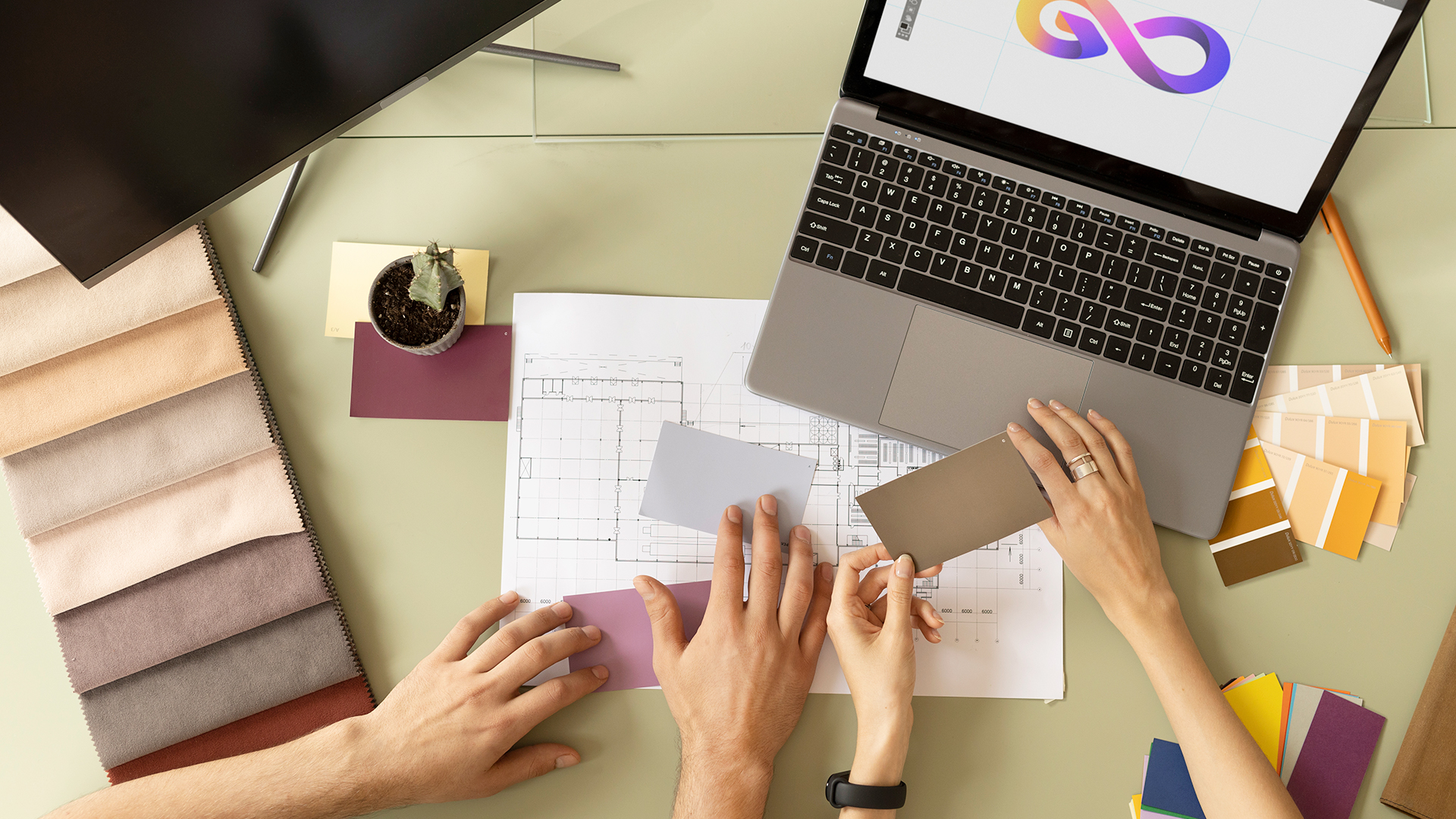Everyone has seen a logo of some kind. From simplistic logos from that of the Nike swoosh, to the elegant logo of Coca-Cola, one’s logo serves as the cornerstone of brand identity. For new designers just getting into the industry, or creating a logo for someone else, creating a logo that stands the test of time requires balancing creativity with strategic brand awareness. Here are five tips to help you create timeless logos that build lasting brand recognition.
1. Embrace Simplicity with Purpose
Think about popular logos that you can recognize from just a thought. What do most of them have in common? Simplicity. Iconic brands like Apple, Nike, and McDonald’s designed their logos to be uncomplicated yet instantly recognizable. Simplicity ensures your logo remains legible across all platforms and sizes, from billboards to app icons.
More detail is not always the better result. Ask yourself: Can someone redraw this logo from memory after seeing it just a few times? If not, you may need to simplify further. Does this mean that you can’t use that awesome idea because you can’t draw it? No, of course not, just don’t make it too complicated.
A purposeful approach to simplicity means every element serves a function. Remove decorative elements that don’t contribute to the logo’s meaning or recognition. Remember that a simplified logo isn’t an empty one—it’s refined to its essential components.
2. Strategic Symbolism
Effective logos tap into the universal language: visual. While creating unique connections to the brand, research symbols and shapes that relate to the industry, values, or unique selling proposition your logo is going to be tied to. Dig deeper than the surface-level. For instance, rather than using a generic house shape for a real estate company, consider architectural elements that might represent specific brand qualities like stability, innovation, or luxury. Be sure to balance literal and abstract. Too literal, and your logo might feel generic; too abstract, and it could fail to create meaningful connections.
Many designers study the psychological effects of different shapes: circles convey community and completeness, squares suggest stability and reliability, triangles imply direction and growth. Choose forms that align with your brand’s personality and positioning.
3. Develop a Color Strategy
Color dramatically influences how people perceive and remember brands. Strategic color choices can make your logo stand out in a crowded marketplace while conveying specific emotions and messages. For example, financial institutions often use blue to convey trust, but a tech startup might choose purple to signal innovation.
Limit your palette to one or two primary colors for maximum impact and recognition. Select colors that work harmoniously together and ensure adequate contrast for legibility. Consider how these colors will appear across different backgrounds and printing processes.
4. Create Balance Between Timeless & Contemporary
The most enduring logos strike a delicate balance—they feel current without chasing fleeting trends. Avoid design elements that are clearly tied to the current fads. That swirly 3D gradient effect might look cutting-edge today but could date your logo within months. Instead, find contemporary expressions of enduring design principles like balance, proportion, and harmony.
Consider evolutionary design—creating logos that can be subtly refined over time without losing recognition. Companies like Coca-Cola, Apple, and Adidas have maintained their essential identity while allowing minor updates to keep their logos fresh.
5. Design for Versatility & Scalability
Something else to think about while designing a logo is how it will be used. Designing a timeless logo must function effectively across all potential applications—from business cards to building signage. Having the versatility to use your logo in many ways will help build brand recognition. Be thoughtful of these design decisions at the beginning of your logo design journey. It can be complicated to work out the versatility once you start applying it to your awesome swag ideas.
Before you begin designing on a computer, sketch ideas down on paper. Once you have a design ready to flesh out, then you can take it into your program of choice. Use a vector-based program to design your logo on your device. My recommendation is Adobe Illustrator, but use one whatever is available to you or what you are more comfortable with.
Start by designing the logo in one color to ensure your logo works without relying on a specific color. I usually use black or blue when I do my logos, but you can use your preference on color. Avoid using white on a black background at this point. Using the one color approach forces you to focus on strong shapes and contrast. Once your monochrome, silhouette version works, then you can start to introduce your brand color strategically.
Test your logo at various sizes, particularly at very small scales like favicon or app icon size. If details disappear or the logo becomes unrecognizable when reduced, reconsider those elements. Designing as a vector will maintain the quality of the logo at any size.
By focusing on these five areas graphic designers can create logos that not only look good today but build enduring brand recognition for years to come.
